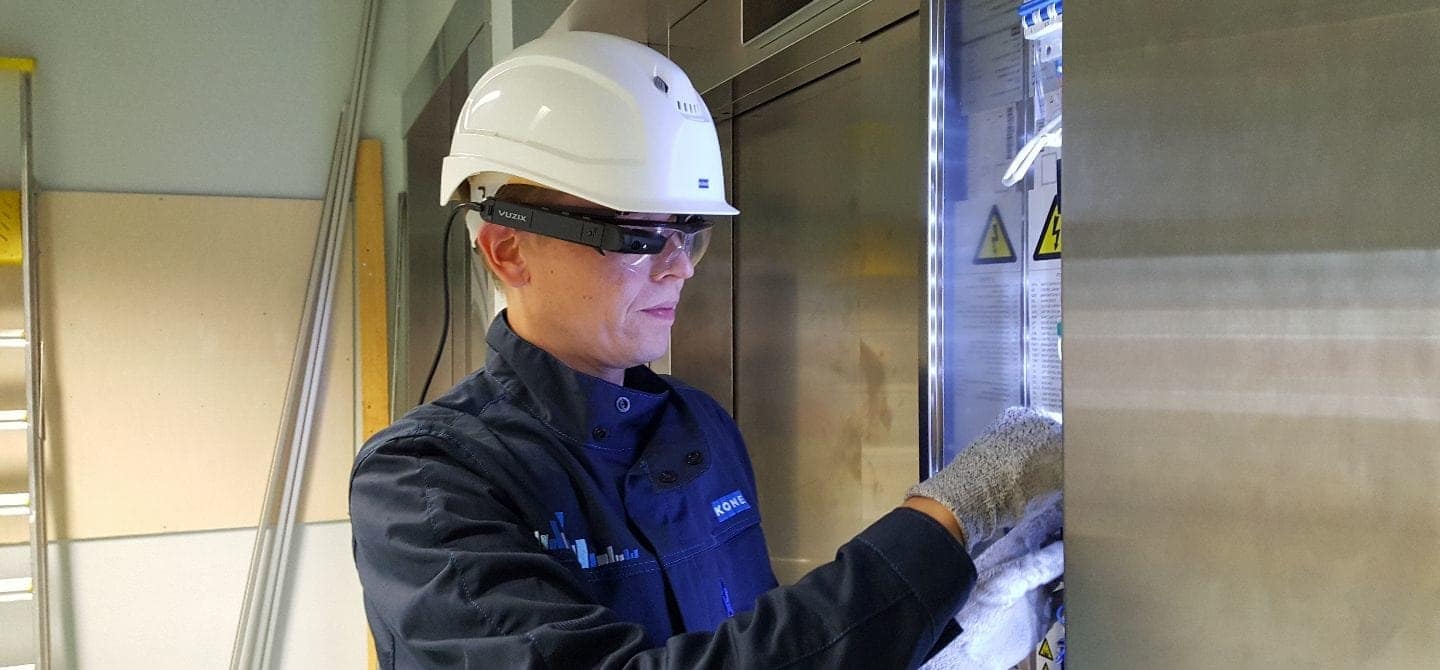It’s easy to imagine people working faster, more independently and more efficiently thanks to these advances. To nurture a digitally enabled workforce, however, organisations need to do more than to prioritise investment in technology. They must help their employees develop the skills they will need to be well-positioned to support themselves and they need to succeed in the future of work.
At KONE, we need to continuously enrich the capabilities or our people to make sure that we are able to meet and exceed our customers’ expectations. We want to motivate and support our employees in learning new skills. This forms a significant part of our efforts to make KONE a great place to work.
Building these digital competences comprises three steps. First, there needs to be supporting leadership and culture. This means always starting from understanding and addressing real customer needs, for example, and having the necessary mindset and behaviours to do so. Second, basic digital skills have to be established. These include mastering how to work in today’s digital environment, from finding information and securing data to collaborating online, among others. Third and last, more advanced, everyday job related skills should be fostered. These may revolve around digital marketing, analytics, or knowing how to sell, install or maintain our new solutions and services, depending on the requirements of each of our roles.
“To support our employees in learning these skills and competences, we have made customer value and customer centricity the starting point,” says Tiina Takala, KONE’s Head of Learning and Development. “Digital solutions and new working tools can transform the customer experience while data and analytics enable better and more informed business decisions. They can also make our daily work easier and provide necessary information and learning when we need it,” she continues.
Takala says that collaboration is also encouraged at KONE. She adds that these could, for example, consist of solving problems in cross-functional teams, co-creating with customers and sharing learnings with peers. Moreover, she shares that KONE believes in lifelong learning. “This is done by investing in personal skills development, personal accountability and curiosity for new competences.”
The impact of data on the way we work
The availability of all kinds of data – along with the ability to organise and interpret large volumes of it to get actionable intelligence – is changing the way we work at KONE. Computing speed and device connectivity are increasing at exponential rates, enabling a lot of things that couldn’t be done before. In the past, for instance, our field service engineers used to go on site to detect problems. They referred to manuals and travelled to the office to order spare parts before going back to the site to fix the issue. Paper reports were only filed once they returned to the office.
Today, our engineers go to different locations better prepared for their visits using mobile applications, which they also use to report from wherever they are. Our engineers now order spare parts online and keep customers updated using our digital communication tools.
Soon, 24/7 mobile access to detailed data and analytics on equipment status will keep our equipment, data and people connected. This will help us predict and prevent problems and minimise customer downtime. We will receive back office troubleshooting support on site from colleagues and through digital documents via smartphone augmented reality applications.
"Conducting the modular-based maintenance training session using one’s phone and experiencing a 3D installation instruction through VR is definitely the biggest innovation as far as KONE training is concerned.” - Arthur Fernandez, Field Trainer, KONE Philippines
Training tomorrow’s workforce
Takala mentions that while testing some of these solutions, school kids were invited to join the training teams. “It has been eye-opening to see that this generation’s learning is heading towards this direction. Technology is reframing the demand on the workforce, and utilising these latest advancements is a must for talent attraction and engagement,” she says.
Digitalisation is driven by technological progress and digital tools may support our own employees in keeping customers satisfied. Ultimately, however, the human factor is at the heart of this development. KONE is committed to deliver training that will meet shifting skills and competence profiles and unlock the potential in our present and future employees.
Beyond the traditional classroom
At present companies of all sizes realise the advantages of implementing new digital learning methods. At KONE, some of our e-learning offerings include trainings on connectivity, IoT and Cloud-related topics. In addition to having new content on digital competences, it’s also worth noting that the way we learn is changing rapidly.
Of course, digitalisation is making it possible for us to develop new ways of learning and build competences even faster. Apart from mobile learning, we are also investing in extending the learning environment beyond classroom walls using Yammer, our internal social media channel, and remote coaching. Then there are methods such as gamified learning, and the use of augmented reality (AR) and virtual reality (VR).
For example, in the Netherlands and the US, mobile toolbox talks are in active use via our mobile konelearning.com app. In several countries in the Asia-Pacific and Europe KONE employees have begun practicing the installation of the MonoSpace® 500 machine room-less lift with VR equipment. Hundreds more have been testing mobile games, using these to learn grounding, troubleshooting and maintenance techniques. Installation managers are now able to exchange their experiences across different countries and time zones, and learn new working practices in a fully virtual classroom. These do not replace face-to-face training, but help to make them more efficient.
The target for the next two years is to scale up these new learning methods. “Now that we know what works and what doesn’t, and how different methods work in different languages or environments, we can move forward in making sure that we utilise and learn with these,” Takala explains.
